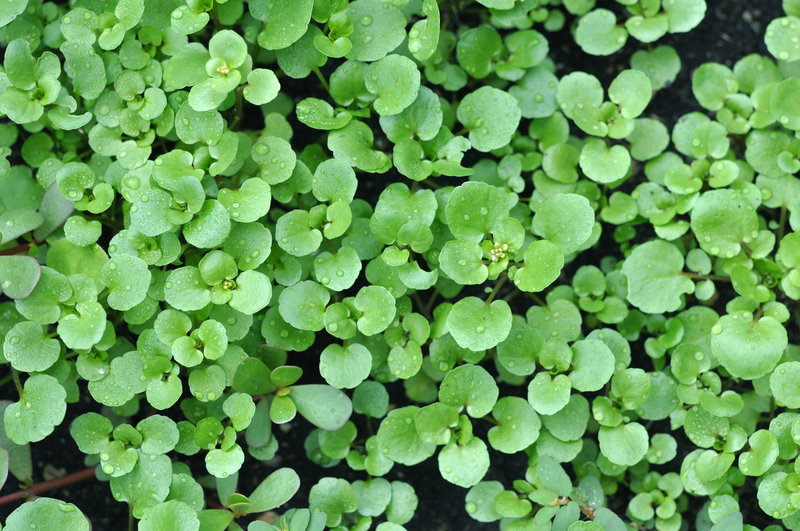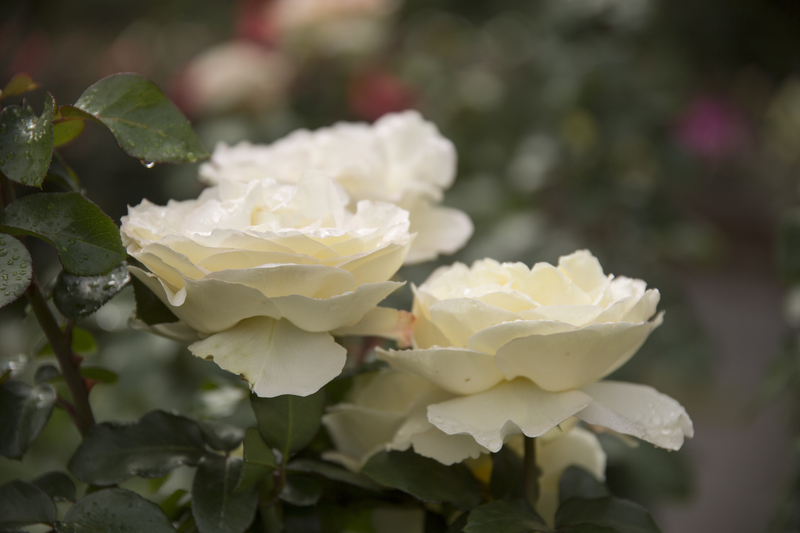Shielding Your Greenery: Essential Winter Garden Protection
Posted on 29/05/2025
Shielding Your Greenery: Essential Winter Garden Protection
The arrival of frosty temperatures and biting winds puts every devoted gardener's skills to the test. As winter sweeps in, shielding your greenery becomes vital to ensuring a lush, thriving garden when the warmth returns. Essential winter garden protection strategies help your plants weather the cold, emerge stronger, and reward you with vibrant blooms and bountiful harvests in spring.
In this comprehensive guide, we'll uncover practical and effective methods to protect your garden in winter. Whether you're a seasoned horticulturist or a weekend green thumb, discover the secrets to safeguarding your garden against frost, freeze, wind, and snow.

Table of Contents
- Understanding Winter's Risks for Your Garden
- Choosing the Right Plants for Winter Hardiness
- Preparing Your Garden for Winter: Preemptive Steps
- Top Methods for Winter Garden Protection
- Protecting Special Categories: Trees, Shrubs, Flowers & Vegetables
- Overwintering Potted Plants and House Greenery
- Common Winter Protection Mistakes to Avoid
- Spring Recovery: Helping Your Garden Bounce Back
- Frequently Asked Questions
Understanding Winter's Risks for Your Garden
Winter can be unforgiving for your plants. Garden winter protection is necessary because cold stress, dehydration, frost heave, and even pests can wreak havoc on unprotected greenery.
Cold Stress and Freeze Damage
- Sudden temperature drops can rupture plant cells, causing dieback or death.
- Repeated freezing and thawing can loosen root systems in the soil.
- Evergreens risk losing moisture through their leaves on sunny but frigid days.
Soil Issues
- Frost heave: Frequent freezing/thawing lifts roots, exposing them to the elements.
- Compacted or poorly draining soils increase the risk of root rot during wet spells.
Physical and Environmental Threats
- Heavy snow can break branches and crush stems.
- Desiccating winter winds strip moisture from foliage.
- Pests like mice and voles may gnaw bark or roots seeking food and shelter.
Choosing the Right Plants for Winter Hardiness
One of the most effective forms of winter garden shielding starts before you even plant. Selecting winter-hardy plants ensures better survival and less struggle during the cold months.
Tips for Selecting Winter-Resistant Plants
- Check USDA Hardiness Zones: Always match your plants with your region's temperature range.
- Choose native species--they're acclimated to local winter conditions.
- Prioritize evergreens, conifers, and woody ornamentals for great winter structure.
- Look for cultivars labeled as winter-hardy or "frost-tolerant."
Remember, what thrives in a warm, sunny fall may need extra defense once winter arrives.
Preparing Your Garden for Winter: Preemptive Steps
Effective winter protection for plants begins in late autumn. Pre-winter garden prep shores up your plants' health and lays the foundation for winter resilience.
Essential Pre-Winter Chores
- Clean up debris: Remove diseased or dead materials to deter pests and pathogens.
- Aerate and amend soil: Loosen soil and add organic matter to improve root health.
- Deep water before freeze: Hydrated roots withstand cold better than dry ones.
- Prune carefully: Avoid heavy mid-fall pruning, but cut back damaged limbs and spent annuals.
- Mulch, mulch, mulch: A thick layer (2-4 inches) insulates soil temperature and retains moisture.
- Stake vulnerable trees/shrubs: Prevent wind rocking and root disturbance.
Tip: Use organic mulches such as shredded bark, straw, or pine needles; avoid materials that mat down or attract rodents.
Top Methods for Winter Garden Protection
Let's explore the most effective tactics for shielding your garden in winter. Every garden is different--combine strategies for optimal results.
1. Mulching--Nature's Blanket
- Insulates root zones, moderating soil temperature.
- Helps retain moisture and prevents heaving.
- Reduces weed growth in spring.
- Use straw, leaf mold, wood chips, compost, or evergreen boughs.
How to Apply: Add mulch after the first hard frost but before the ground fully freezes. Pile it loosely around the base, keeping clear of trunks/stems to prevent rot.
2. Covering Plants: Cloches, Row Covers, and Frames
- Protects sensitive plants from frost and strong winds.
- Floating row covers, frost blankets, burlap wraps, or custom-made cold frames work well.
- Use cloches or makeshift covers (like overturned buckets) for prized perennials.
Secure covers against the wind and regularly check for condensation or pests underneath.
3. Windbreaks and Physical Barriers
- Hedges, fences, or temporary windbreaks (burlap screens) shield plants from desiccating gusts.
- Minimize evergreen browning and broken branches.
- Stack up old Christmas trees or brush to diffuse wind along exposed garden edges.
4. Anti-Desiccant Sprays
- Apply to broadleaf evergreens (like rhododendrons, boxwood) to reduce winter moisture loss.
- Best used on calm, dry days and repeated every six weeks as needed.
5. Protecting Roots & Trunks
- Wrap young or thin-barked trees with tree guards or spiral wraps to prevent sunscald and rodent damage.
- Shield newly planted roots with extra mulch or insulation boards (especially for roses and tender shrubs).
6. Snow Management
- Gently brush heavy, wet snow off branches to prevent breakage.
- Let powdery snow insulate plantings--it's a natural blanket!
- Avoid piling shoveled snow onto beds, especially if it has road salt.
7. Monitoring and Maintenance
- Check covers and wraps regularly for wear or displacement.
- Repair windbreaks or add extra mulch as needed during winter thaws.
- Clear away fallen branches or debris after storms.
Protecting Special Categories: Trees, Shrubs, Flowers & Vegetables
Every type of garden plant has unique cold-weather vulnerabilities. Here's how to provide the best winter plant protection for each group:
Trees and Shrubs
- Wrap trunks to avoid sunscald and animal damage.
- Mulch just beyond the root zone to protect feeder roots.
- Water evergreens on warm winter days during dry spells.
- Stake large shrubs to reduce wind movement.
Perennials and Flowers
- Cut back stems only after the ground freezes to avoid pushing new growth.
- Thickly mulch crowns but keep away from direct stem contact.
- Leave some seed heads for wildlife and added winter interest.
Vegetable Beds
- Remove spent crops and debris.
- Apply a cover crop (like rye or clover) or heavy mulch to prevent weed seeds from sprouting early.
- Consider using row covers or cold frames for winter greens and root veg.
Specialty Plants (Roses, Exotics, Bulbs)
- Hill up mulch around rose crowns; protect hybrid teas with extra insulation.
- Dig up and store tender bulbs like dahlias, gladiolus, and cannas in a cool, dry place.
- For marginal exotics (like figs, camellias), use straw-wrapped cages or insulated blankets.
Overwintering Potted Plants and House Greenery
Potted plants and house greenery are vulnerable to root freeze and windburn even more than in-ground vegetables or flowers. Winter shielding for containers is essential if you want your potted beauties to survive until spring.
- Move pots to sheltered spots: along south walls, in garages, or inside cold frames.
- Wrap containers with bubble wrap, burlap, or horticultural fleece for extra insulation.
- Cluster pots together to create a microclimate and reduce heat loss.
- Water potted plants sparingly but do not let them dry out completely.
- For tropicals, transition indoors before the first frost; monitor light, moisture, and humidity inside.
Tip: Even hardy perennials in containers may need more protection than the same plant in the ground--roots are more exposed in pots.
Common Winter Protection Mistakes to Avoid
To keep your garden in top condition throughout the coldest months, avoid these frequent winter protection errors:
- Applying mulch too early--wait for colder temperatures so rodents don't nest.
- Heavy fall pruning--stimulates tender new growth that will freeze.
- Overwatering in cold spells--can lead to root rot or disease.
- Nylon, plastic, or airtight covers--may trap moisture and cause fungal issues instead of protecting.
- Forgetting to remove covers on sunny days--overheating can damage dormant buds.
- Neglecting container drainage--ensure pots don't freeze and crack or drown the plant roots.
Spring Recovery: Helping Your Garden Bounce Back
Once winter has passed, it's vital to transition your garden out of protection mode. Early spring care helps plants recover and sets the stage for a thriving, beautiful landscape through the growing season.
- Gradually remove mulches, covers, and wraps after the danger of hard frost passes.
- Prune away winter-damaged limbs and stems.
- Top-dress beds with compost and slow-release fertilizer for a nutrient boost.
- Inspect for overwintering pests or fungal problems and address promptly.
- Water newly uncovered beds thoroughly as they wake up.
Patience pays--let new shoots and leaves emerge naturally before heavy pruning or fertilizing!
Frequently Asked Questions
Q: What is the most important step in shielding my garden for winter?
A: Mulching is generally the most effective single step, as it stabilizes temperature and moisture around roots. Combine with covers or barriers for vulnerable plants.
Q: When should I apply winter protection to my plants?
A: Wait until late fall, after the first consistent hard frost, but before the ground is frozen solid. Too early may attract rodents; too late risks early damage.
Q: Can some plants be left uncovered all winter?
A: Native and fully hardy species generally require little extra protection. However, exposed locations or unusual cold snaps may require temporary shielding even for the hardiest plants.
Q: How do I protect my garden if there's an unexpected early freeze?
A: Use makeshift frost covers (burlap, sheets, cloches), pile on extra mulch, and provide windbreaks wherever possible. Remove the covers during the day to prevent overheating.
Q: How can container gardens survive the winter?
A: Move pots to sheltered spots, add insulation, reduce watering, and avoid letting pots freeze solid. For tender plants, overwinter indoors or in a bright, frost-free area.

Your Winter Garden Shield: Key Takeaways
With knowledge and planning, winter garden protection becomes a routine part of caring for your outdoor oasis. By choosing hardy plants, prepping in autumn, mulching, providing barriers and shelters, and paying attention to plant-specific needs, you ensure that your garden survives and thrives through the harshest months.
Dedicate a few pre-cold-season weekends to shielding your greenery and you'll enjoy a stunning, resilient garden year after year--even when winter tightens its icy grip!
Ready for more gardening tips? Subscribe to our newsletter for the latest seasonal advice and essential guides on keeping your greenery lush and healthy, all year long.

